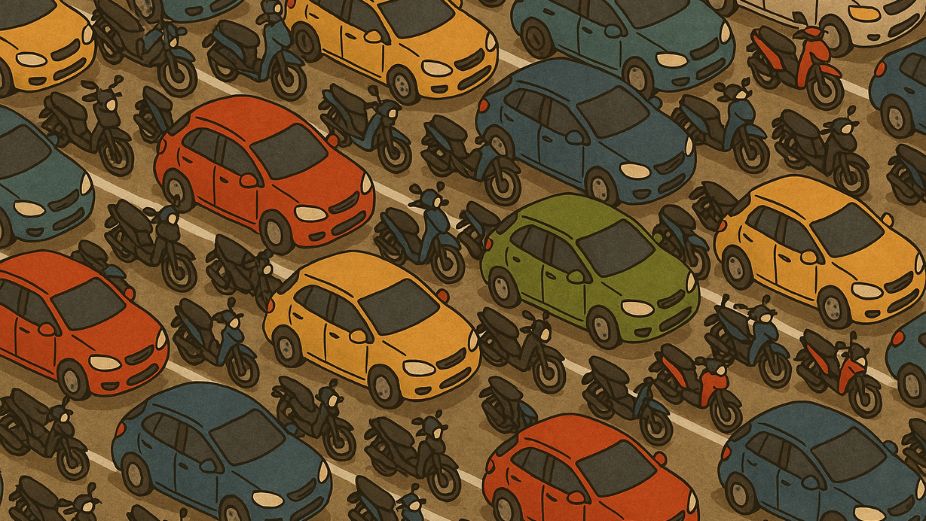
A comprehensive study by the Islamic University of Maldives (IUM) has recommended a significant reduction in the number of vehicles in the Greater Malé Region, citing traffic congestion, environmental degradation, and poor air quality as pressing concerns. The report proposes limiting the number of vehicles allowed on the roads to 89,413—down from the current figure of 119,472.
According to the report, nearly 87 percent of vehicles currently in use are motorcycles, while cars account for about six percent. Most are owned by private individuals, with nearly 86 percent of all vehicles registered under personal ownership. The study also found that over 71,000 vehicles in the region do not meet roadworthiness standards, raising further questions about safety and emissions.
The study highlights the unsustainable density of vehicles, estimating 12,984 vehicles per square kilometre of driving space in the Greater Malé area. In Male’ City alone, that figure rises to a staggering 42,669 vehicles per square kilometre—well above the global average of 7,633.
To tackle these issues, the study recommends focusing on population-based thresholds, international best practices, and physical infrastructure capacity. Using global benchmarks, it proposes limiting vehicle ownership to 321 vehicles per 1,000 residents, which would bring the total down to 81,318 based on the current population of 252,768. When accounting for vehicle age and roadworthiness, the optimal number increases slightly to 89,413.
Motorcycles would see the steepest cut, with a proposed reduction from 103,300 to 76,518. Cars would be reduced from 7,505 to 5,610, while heavy and industrial vehicles would largely remain untouched due to their economic utility and relatively slow growth.
The study warns that without such restrictions, traffic congestion, illegal parking, and environmental deterioration will continue to escalate. It also predicts that over 27,000 young residents will become eligible for driving licences in the next five years, adding further strain to already overwhelmed roads and infrastructure.
The report outlines a phased implementation strategy starting in December 2025, with measures such as improved public transport, vehicle age limits, stricter emissions regulations, waste disposal systems for old vehicles, and public awareness campaigns. Drawing from international models, it urges policy coherence and long-term stakeholder engagement.
While the recommendations are extensive, the report notes that the success of any restriction policy hinges on public transport enhancements, particularly more reliable bus and ferry services. Only 7.4 percent of commuters currently use buses daily, and a significant proportion of residents express dissatisfaction with existing public transport options.
The study concludes that restricting vehicle numbers is no longer a choice but a necessity to safeguard public health, improve quality of life, and move towards a more sustainable and liveable urban environment in the Maldives’ most densely populated region.












